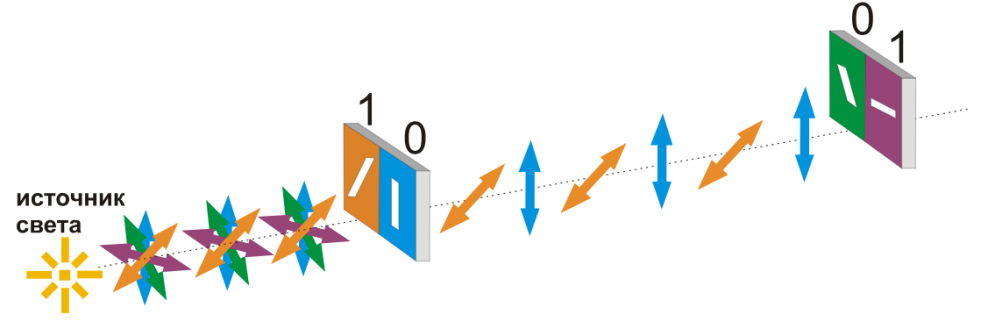For many, quantum technologies are synonymous with quantum computing. But quantum technologies are much more than this, and many are much closer to becoming commercial products.
Quantum technologies harness the surprising properties of single atoms, electrons and photons, and how they interact. The behaviour of quantum systems gives rise to many extraordinary properties which don’t appear at a larger scale. Our growing ability to detect, measure and manipulate these properties is about to create a new wave of innovations which will have an important impact on many industries, from electronics, to oil and gas, to civil engineering. And yes, also on computing.
Timing and navigation
Let’s start with a well-established quantum technology – atomic clocks. These use the frequency of a stable laser to create ‘ticks’, and the properties of atoms to tune this laser and ensure it never drifts.
Long confined to sophisticated timing labs, recent advances have created atomic clocks for industrial environments, such as the MINAC Miniature Atomic Clock, developed by NPL and now being commercialised by Teledyne-e2v.

These compact clocks will be important as technology gets smaller, faster and more precise. Electronic messages can be fired off billions of times per second divided up into separate packages. Accurately recording when they were sent is vital to putting them back together when they are received. The more accurate the timing, the more information you can send per second. Practical atomic clocks also provide an important alternative to GPS timing signals which are vulnerable to interruptions.
Sensing
The quantum state of particles can be affected by very small changes in magnetism or gravity. Using clouds of highly controlled atoms, we can detect the ‘fingerprints’ left by these changes.
A promising application is detecting corrosion, with applications in oil & gas and civil engineering. The disruption to a metal surface, or the presence of small pits due to corrosion can be detected through the altered pattern of the magnetic signature. This can be detected through paint or insulation which makes it a powerful new technique.
This same technology could be used to measure magnetic fields produced by the heart and brain to look for signs of neurodegenerative pathologies or heart disease. This could replace the SQUID systems used in hospitals for Magnetoencephalography brain scans which are large, expensive and require cryogenic liquids to operate.
Communications and computing
Some of the most exciting applications of quantum relate to transferring information encoded in particles.
Quantum key distribution (QKD) is one of the most commercially-advanced quantum technologies. It enables a secret key to be encoded into a series of photons, which can be used to encrypt and decrypt messages.
A fundamental aspect of quantum mechanics is that observing a quantum system changes its state. In QKD, any third party intercepting the photons, will change them. If the key arrives unchanged, parties can start sending encrypted messages, making transmission of information 100 per cent secure.

The Quantum Communications Hub has set up a fibre link between BT Labs in Ipswich and The University of Cambridge to test these and other quantum communications technologies in live environments –helping innovators develop smaller QKD devices and demonstrate practical applications to industry.
And finally, quantum computing. This takes advantage of quantum superposition - whereby particles can exist in two states simultaneously. This allows the creation of ‘qubits’, the quantum equivalent of bits which represent the 1s and 0s in digital communications but in the case of a quantum computer the qubit can also be a mixture of 1 and 0. For instance, a photon can be created in two different states which can represent either a 1 or a 0 or a mixture of those two states. This allows orders of magnitude more information to be stored than in ordinary computers, which in turn enables the creation of computers with unprecedented data processing speeds.
Who benefits?
The goal of The UK National Quantum Technologies Programme is to make the UK the centre of the emerging quantum industries, so the first beneficiaries will be the many quantum startups that this industry will spawn.
As for the end-users, they are many and varied. Oil and gas may use quantum sensors to find new reserves. Civil engineers can monitor the state of a site below ground level or the spread of corrosion through bridges. Hospitals will have access to more accurate and easy-to-use diagnostic tools for brain and heart conditions. R&D in pharma and chemical industries will be able to use quantum computers to model new drugs. Everyone will benefit from faster and safer communications and electronics. There is even a quantum wine quality analyser in development.

Where are we now?
Some of these technologies are still a decade away, others such as QKD are nearly here. Capability is advancing rapidly in a number of countries, and there is considerable academic, business and government resources behind making the quantum a success in the UK.
A remaining barrier to commercialisation is trust. These are complex technologies harnessing advanced physics. To realise their potential, buyers need to see them working and have independent validation of their capabilities.
Initiatives like the BT-Cambridge fibre link play an important role, as does our own work at the Quantum Metrology Centre, validating the claims of new quantum technologies. Since quantum technologies all hinge on being able to detect quantum states, the role of measurement cannot be overstated, both in developing the technologies – and providing end-users with assurance.
We have a way to go before quantum becomes mainstream, but there is undoubtedly momentum. The first Quantum Technologies Showcase in November 2015 had 200 delegates and a handful of exhibitors. This year’s had 900 delegates and over 80 exhibitors, many with close to market technologies. The government’s quantum fund is oversubscribed.
The technology is advancing apace. But perhaps more than any technology before it, success of quantum depends on working together. Innovators need to harness the expertise in research organisations to advance their technologies. End-users need to engage with innovators and national laboratories to ensure that emerging technologies meet their needs, and that they understand them well enough to deploy them in their organisations. Many are already doing so through the National Quantum Technologies Programme, but there are still vast opportunities for those ready to engage early in quantum’s development.
Rhys Lewis is Director of the Quantum Metrology Institute at The National Physical Laboratory, the UK’s national measurement institute. He is responsible for NPL’s strategic direction in quantum and for NPL involvement in the UK National Quantum Technologies Programme. He joined NPL in 2007 following a career in industry, including roles at SMEs and start-ups. He holds a degree in Physics and a DPhil in atomic and laser physics from Oxford University.











Water Sector Talent Exodus Could Cripple The Sector
Maybe if things are essential for the running of a country and we want to pay a fair price we should be running these utilities on a not for profit...